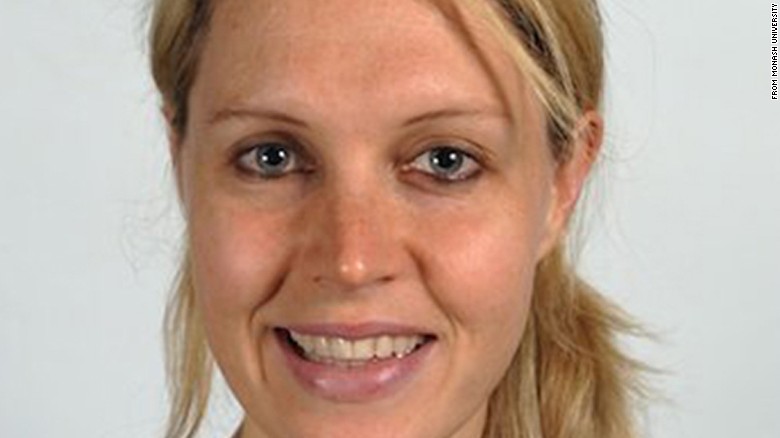From half a world away, Maritha Strydom was following her daughter’s progress on Mount Everest last week through a series of satellite “pings” from the climber’s phone.
Then the pings stopped. And soon after Strydom got the news every parent dreads — not through a phone call, she says, but by reading a news article online.
Her daughter, Maria Strydom, had died of altitude sickness in the arms of her husband, Robert Gropel, Saturday as the couple attempted to climb the world’s tallest peak to prove that vegans can do anything. She was one of four climbers who died on Everest in a grim span of four days.
“I was worried when the pings stopped, and we started calling but no one could give us any answers,” Strydom told CNN in an interview from Brisbane, Australia. “So my other daughter … Googled and found in the Himalayan Times that my daughter had passed away.”

Strydom still wants answers.
She believes her daughter, known by friends and family as Marisa, was in the “death zone” for too long.
The death zone refers to altitudes higher than 8,000 meters (about 26,200 feet), where the risk of dying significantly climbs. There is little oxygen here, so altitude sickness is common and can be deadly. Temperatures tumble, winds intensify and frostbite can hit any exposed part of the body. The ground is icy, so falls are not uncommon.
“No one is supposed to stay in the death zone longer than 16 to 20 hours. If you stay there longer you will be dead,” Strydom told CNN.
South African-born Maria Strydom, 34, worked as a finance professor with the Monash Business School in Melbourne, Australia. She had told the school in an interview that she and Gropel had decided to climb the highest peak on each of the seven continents — the so-called “seven summits” — to prove that vegans are strong.
The couple reached Everest’s South Summit on Friday but decided to turn around and descend when Strydom began feeling poorly, according to an online post by exhibition leader Arnold Coster. Several Sherpas and her husband struggled to carry her down the mountain, but she collapsed the next morning, Coster said. Gropel was evacuated to Kathmandu the next day by helicopter.
“She felt weak and decided to turn around … What Rob knows is that she felt ill, she got medication, she looked a bit better, and when he tried to get her down to camp 3, she suddenly collapsed,” Strydom said.
“There’s a massive gap in between the last ping where she turned around and where the story continues, and no one can tell me what happened in between yet, and I don’t think I’ll find out before Rob is better and, you know, he can tell us what happened,” Strydom said, adding that Gropel was still suffering from altitude sickness.
“I am very, very concerned. I’m concerned about a lot of things,” she added. “In their itinerary it was suggested they would sleep over at camp 3 for their acclimatization. They didn’t.”
Strydom also is upset that she had to learn of her daughter’s death on the Internet.
“For two, three days not a word,” she said. Someone finally called her on Tuesday, she said.
Now Strydom is focused on retrieving Marisa’s body from Everest and returning her to Australia.
“We are totally devastated. Everything we did was to get her body back, because they just abandon bodies on the mountain if they’re dead. If you’re alive, they try to rescue you, like they did with Rob. If you didn’t survive they leave you on the mountain. So our whole fight was just to get her off that mountain and back home,” she said.
“I don’t know how I’m going to live without her, but if she was abandoned on that mountain, I know I wouldn’t have made it,” she said. “It’s the toughest thing that ever happened to me. Such a lovely girl, so talented so giving, and a life wasted.”
As reported by CNN
